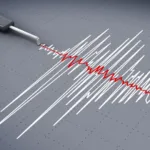Chandrayaan-3’s lander Vikram is set to detach from the spacecraft’s propulsion module today. The lander and rover, Pragyaan, will land on the Moon on August 23. On reaching the Moon, Vikram will photograph Pragyaan. After the Vikram lander separates from the propulsion module, the rover will then deploy its instruments to study lunar seismic activity. This means that the rover will use its tools to measure and analyze any movements or vibrations on the moon’s surface. These measurements can provide valuable information about the moon’s interior and its geological history.
India’s ambitious moon mission, Chandrayaan-3, completed its fifth lunar-bound orbit maneuver yesterday. This brought the spacecraft closer to the Moon’s surface.
Having finished its lunar-bound maneuvers, the spacecraft will now get ready to separate the lander Vikram from the propulsion module.
“Today’s successful firing, which was brief, placed Chandrayaan-3 in its intended orbit of 153 km x 163 km. Lunar-bound maneuvers are done. The Indian Space Research Organization (ISRO) shared on X (formerly Twitter) that the Propulsion Module and Lander Module are getting ready for their separate journeys.
Chandrayaan-3 launched on July 14 via LVM3 rocket from Sriharikota. It entered lunar orbit on August 5 and aims to land on the Moon on August 23.
Yesterday, ISRO successfully set the spacecraft in a circular orbit (153 km x 163 km) around the Moon, concluding lunar-bound maneuvers.
OAfter the Vikram lander separates from the propulsion module, the propulsion module will continue its journey in the current orbit for months or years. It will perform a spectroscopic study of the Earth’s atmosphere. On August 23, Vikram attempts a soft Moon landing.
Vikram’s task: capture the Pragyaan rover in photos. Pragyaan employs lasers to melt lunar regolith, analyzing emitted gases.






